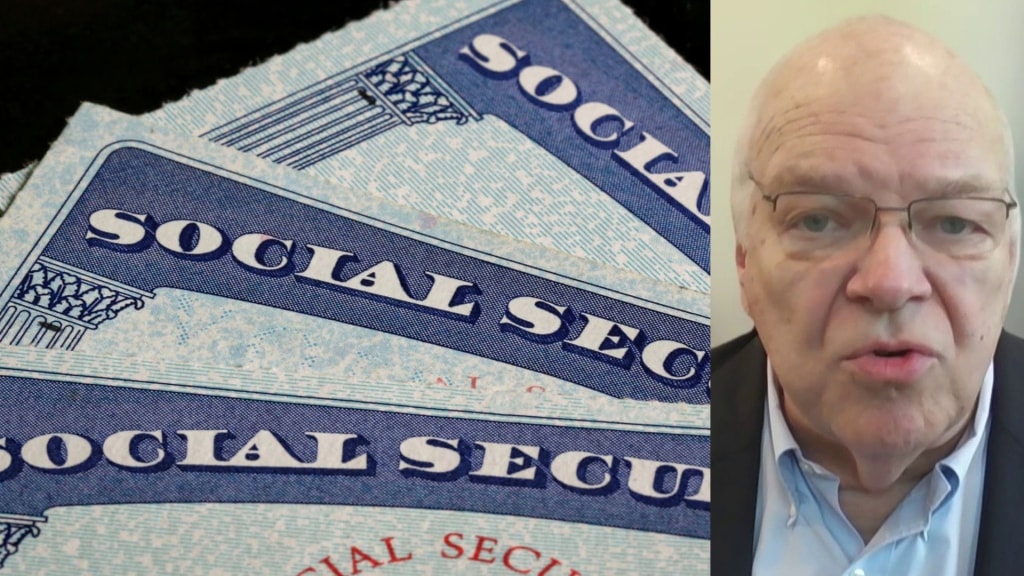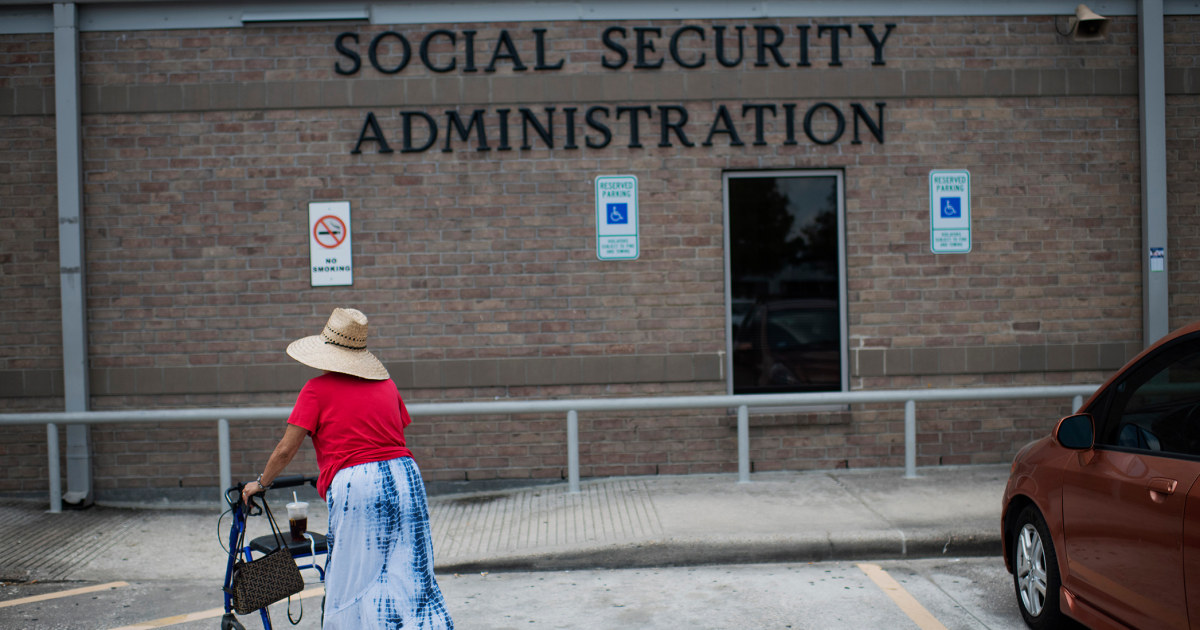Social Security’s funding crisis is a year closer — and Trump’s approach will make it worse – MSNBC News

Report on the Social Security Trust Fund Depletion and Sustainable Development Goals

Overview of Social Security Trust Fund Status
The Social Security Board of Trustees recently announced that the combined trust funds of the Social Security program are projected to be depleted by 2034, one year earlier than the 2024 projection. Without corrective measures, retirement benefits could be reduced by nearly 25% within the next decade.
Significance to Sustainable Development Goals (SDGs)
This impending funding crisis directly impacts several United Nations Sustainable Development Goals, including:
- SDG 1: No Poverty – Social Security provides critical income support to millions of retirees, preventing poverty among the elderly.
- SDG 3: Good Health and Well-being – Financial security through Social Security contributes to better health outcomes for older adults.
- SDG 10: Reduced Inequalities – Social Security helps reduce income inequality by supporting vulnerable populations such as retirees and disabled individuals.
Background and Current Financial Status
- Social Security operates primarily as a pay-as-you-go system where payroll taxes from current workers fund benefits for current retirees.
- From 1983 to 2021, Social Security collected more in revenue than it paid out in benefits.
- Since 2021, due to demographic changes, benefit payments have exceeded revenues, leading to the drawdown of two trust funds: one for disability benefits and a larger one for retirement and survivor benefits.
- The retirement trust fund is expected to be depleted by 2033; using the disability trust fund extends solvency by only one additional year, requiring congressional approval.
Recent Legislative Impact
The Social Security Fairness Act, which eliminated benefit reductions for certain public workers receiving pensions, accelerated the depletion date by approximately six months. This legislation, passed with bipartisan support, contributes to an average shortfall of about $330 billion annually over the next 75 years.
Potential Consequences of Inaction
- Retirement benefits would not disappear but would be reduced to 77% of scheduled payments.
- Such reductions would have catastrophic effects on millions, as Social Security provides at least half of the income for roughly 40% of retirees and at least 90% for one in seven retirees.
Policy Actions and Their Implications
Recent policy proposals under the Trump administration risk accelerating the depletion of Social Security funds:
- Mass deportations could reduce the workforce contributing payroll taxes, including undocumented immigrants who currently pay billions in taxes without receiving benefits.
- Tariff policies potentially increasing inflation would raise cost-of-living adjustments, increasing program costs.
- Claims of addressing “waste, fraud, and abuse” have been largely debunked; overpayments average $3.4 billion annually, a small fraction of the nearly $1.5 trillion program cost in 2024.
- Staff cuts and reduced field offices have increased wait times for claims, negatively impacting beneficiary services.
Public Opinion and Political Landscape
Public consensus strongly opposes benefit reductions:
- A Pew Research poll found that 79% of Americans, including 77% of Republicans, oppose any cuts to Social Security benefits.
- Republican proposals have included raising the retirement age and reducing benefits for high earners, though benefits for seniors near retirement would remain unchanged.
Bipartisan and Progressive Solutions
- The Brookings Institution’s “Blueprint for a Bipartisan Solution” proposes:
- Raising the payroll tax cap
- Slightly increasing payroll taxes
- Encouraging legal immigration
- Reducing earnings for wealthier beneficiaries
- Apply payroll taxes on all income above $250,000, including capital gains
- Keep trust funds solvent
- Increase benefits by $200 per month
Conclusion
Social Security’s funding shortfall is approaching rapidly, threatening the financial security of millions. Addressing this challenge aligns with advancing Sustainable Development Goals by ensuring economic security, reducing inequalities, and promoting well-being for older populations. Without prudent policy action, the burden will fall on future administrations and Congresses to resolve the crisis.
1. Sustainable Development Goals (SDGs) Addressed or Connected
- SDG 1: No Poverty
- Social Security benefits are crucial for preventing poverty among retirees and vulnerable populations.
- SDG 3: Good Health and Well-being
- Disability benefits and survivor benefits contribute to health and well-being of affected individuals.
- SDG 8: Decent Work and Economic Growth
- Payroll taxes and workforce participation impact economic growth and social protection systems.
- SDG 10: Reduced Inequalities
- Proposals to adjust benefits and payroll taxes for wealthier individuals relate to reducing inequalities.
- SDG 16: Peace, Justice and Strong Institutions
- Transparency and combating fraud in Social Security administration relate to building effective institutions.
2. Specific Targets Under Those SDGs
- SDG 1: No Poverty
- Target 1.3: Implement nationally appropriate social protection systems and measures for all, including social protection floors.
- SDG 3: Good Health and Well-being
- Target 3.8: Achieve universal health coverage, including financial risk protection and access to quality essential health-care services.
- SDG 8: Decent Work and Economic Growth
- Target 8.5: Achieve full and productive employment and decent work for all women and men, including young people and persons with disabilities.
- Target 8.6: Reduce the proportion of youth not in employment, education or training.
- SDG 10: Reduced Inequalities
- Target 10.4: Adopt policies, especially fiscal, wage and social protection policies, and progressively achieve greater equality.
- SDG 16: Peace, Justice and Strong Institutions
- Target 16.6: Develop effective, accountable and transparent institutions at all levels.
- Target 16.9: Provide legal identity for all, including birth registration.
3. Indicators Mentioned or Implied to Measure Progress
- Indicator for SDG 1.3
- Proportion of population covered by social protection systems, including social security.
- Percentage of retirees receiving Social Security benefits as a share of their income.
- Indicator for SDG 3.8
- Coverage of disability benefits as part of social protection.
- Indicator for SDG 8.5 and 8.6
- Number of workers contributing to Social Security payroll taxes.
- Workforce size and demographic changes affecting Social Security funding.
- Indicator for SDG 10.4
- Progressivity of payroll tax system (e.g., payroll tax cap adjustments, taxation of capital gains).
- Benefit levels for different income groups.
- Indicator for SDG 16.6
- Administrative costs as a percentage of total Social Security expenditures (noted as 0.5 cents per dollar spent).
- Overpayment and fraud rates (e.g., $3.4 billion per year in overpayments).
- Number of Social Security Administration staff and field offices as a measure of institutional capacity.
4. Table of SDGs, Targets and Indicators
| SDGs | Targets | Indicators |
|---|---|---|
| SDG 1: No Poverty | Target 1.3: Implement social protection systems for all. |
|
| SDG 3: Good Health and Well-being | Target 3.8: Achieve universal health coverage including financial risk protection. |
|
| SDG 8: Decent Work and Economic Growth |
|
|
| SDG 10: Reduced Inequalities | Target 10.4: Adopt fiscal and social protection policies to achieve greater equality. |
|
| SDG 16: Peace, Justice and Strong Institutions |
|
|
Source: msnbc.com








